Jan
25
2024
 Arguably the type of advance that has the greatest impact on technology is material science. Technology can advance by doing more with the materials we have, but new materials can change the game entirely. It is no coincidence that we mark different technological ages by the dominant material used, such as the bronze age and iron age. But how do we invent new materials?
Arguably the type of advance that has the greatest impact on technology is material science. Technology can advance by doing more with the materials we have, but new materials can change the game entirely. It is no coincidence that we mark different technological ages by the dominant material used, such as the bronze age and iron age. But how do we invent new materials?
Historically new materials were mostly discovered, not invented. Or we discovered techniques that allowed us to use new materials. Metallurgy, for example, was largely about creating a fire hot enough to smelt different metals. Sometimes we literally discovered new elements, like aluminum or tungsten, with desirable properties. We also figured out how to make alloys, combining different elements to create a new material with unique or improved properties. Adding tin to copper made a much stronger and more durable metal, bronze. While the hunt for new usable elements is basically over, there are so many possible combinations that researching new alloys is still a viable way to find new materials. In fact a recent class of materials known as “superalloys” have incredible properties, such as extreme heat resistance.
If there are no new elements (other than really big and therefore unstable artificial elements), and we already have a mature science of making alloys, what’s next? There are also chemically based materials, such as polymers, resins, and composites, that can have excellent properties, including the ability to be manufactured easily. Plastics clearly had a dramatic effect on our technology, and some of the strongest and lightest materials we have are carbon composites. But again it feels like we have already picked the low-hanging fruit here. We still need new better materials.
Continue Reading »
Jan
23
2024
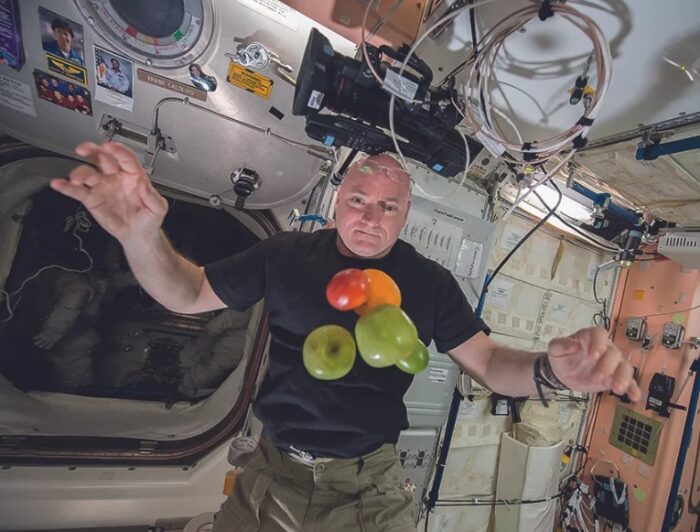 As I have written many times, including in yesterday’s post, people occupying space is hard. The environment of space, or really anywhere not on Earth, is harsh and unforgiving. One of the issues, for example, rarely addressed in science fiction or even discussions of space travel, is radiation. We don’t really have a solution to deal with radiation exposure outside the protective atmosphere and magnetic field of Earth.
As I have written many times, including in yesterday’s post, people occupying space is hard. The environment of space, or really anywhere not on Earth, is harsh and unforgiving. One of the issues, for example, rarely addressed in science fiction or even discussions of space travel, is radiation. We don’t really have a solution to deal with radiation exposure outside the protective atmosphere and magnetic field of Earth.
There are other challenges, however, that do not involve space itself but just the fact that people living off Earth will have to be in an enclosed environment. Whether this is a space station or habitat on the Moon or Mars, people will be living in a relatively small finite physical space. These spaces will be enclosed environments – no opening a window to let some fresh air in. Our best experience so far with this type of environment is the International Space Station (ISS). By all accounts, the ISS smells terrible. It is a combination of antiseptic, body odor, sweat, and basically 22 years of funk.
Perhaps even worse, the ISS is colonized with numerous pathogenic bacteria and different types of fungus. The bacteria is mainly human-associated bacteria, the kinds of critters that live on and in humans. According to NASA:
The researchers found that microbes on the ISS were mostly human-associated. The most prominent bacteria were Staphylococcus (26% of total isolates), Pantoea (23%) and Bacillus (11%). They included organisms that are considered opportunistic pathogens on Earth, such as Staphylococcus aureus (10% of total isolates identified), which is commonly found on the skin and in the nasal passage, and Enterobacter, which is associated with the human gastrointestinal tract.
This is similar to what one might find in a gym or crowded office space, but worse. This is something I often considered – when establishing a new environment off Earth, what will the microbiota look like? On the one hand, establishing a new base is an opportunity to avoid many infectious organisms. Having strict quarantine procedures can create a settlement without flu viruses, COVID, HIV or many of the germs that plague humans. I can imagine strict medical examinations and isolation prior to gaining access to such a community. But can such efforts to make an infection-free settlement succeed?
Continue Reading »
Jan
22
2024
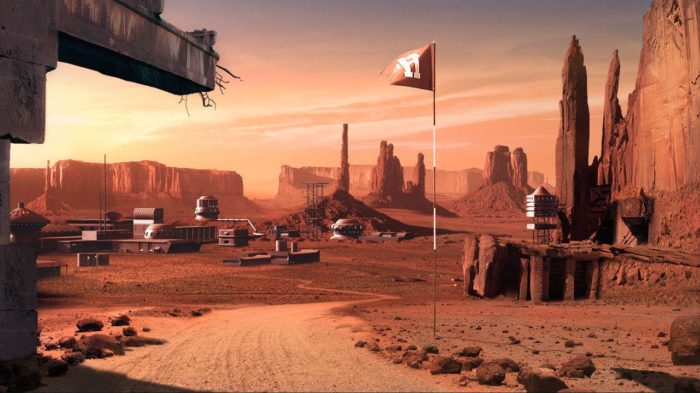 In the excellent sci fi show, The Expanse, which takes place a couple hundred years in the future, Mars has been settled and is an independent self-sustaining society. In fact, Mars is presented as the most scientifically and technologically advanced society of humans in the solar system. This is presented as being due to the fact that Martians have had to struggle to survive and build their world, and that lead to a culture of innovation and dynamism.
In the excellent sci fi show, The Expanse, which takes place a couple hundred years in the future, Mars has been settled and is an independent self-sustaining society. In fact, Mars is presented as the most scientifically and technologically advanced society of humans in the solar system. This is presented as being due to the fact that Martians have had to struggle to survive and build their world, and that lead to a culture of innovation and dynamism.
This is a version of the Turner thesis, which has been invoked as one justification for the extreme expense and difficulty of settling locations off Earth. I was recently pointed to this article discussing the Turner thesis in the context of space settlement, which I found interesting. The Turner thesis is that the frontier mindset of the old West created a culture of individualism, dynamism, and democracy that is a critical part of the success of America in general. This theory was popular in the late 19th and early 20th centuries, but fell out of academic favor in the second half of the 20th century. Recent papers trying to revive some version of it are less than compelling, showing that frontier exposure correlates only very softly with certain political and social features, and that those features are a mixed bag rather than an unalloyed good.
The article is generally critical of the notion that some version of the Turner thesis should be used to justify settling Mars – that humanity would benefit from a new frontier. But I basically agree with the article, that the Turner thesis is rather weak and complex, and that analogies between the American Western frontier and Mars (or other space locations) is highly problematic. In every material sense, it’s a poor analogy. On the frontier there was already air, food, soil, water, and other people living there. None of those things (as far as we know) exists on Mars.
Continue Reading »
Jan
19
2024
 Have you heard of Cope’s Rule or Foster’s Rule? American paleontologist Edward Drinker Cope first noticed a trend in the fossil record that certain animal lineages tend to get bigger over evolutionary time. Most famously this was noticed in the horse lineage, beginning with small dog-sized species and ending with the modern horse. Bristol Foster noticed a similar phenomenon specific to islands – populations that find their way to islands tend to either increase or decrease in size over time, depending on the availability of resources. This may also be called island dwarfism or gigantism (or insular dwarfism or gigantism).
Have you heard of Cope’s Rule or Foster’s Rule? American paleontologist Edward Drinker Cope first noticed a trend in the fossil record that certain animal lineages tend to get bigger over evolutionary time. Most famously this was noticed in the horse lineage, beginning with small dog-sized species and ending with the modern horse. Bristol Foster noticed a similar phenomenon specific to islands – populations that find their way to islands tend to either increase or decrease in size over time, depending on the availability of resources. This may also be called island dwarfism or gigantism (or insular dwarfism or gigantism).
When both of these things happen in the same place there can be some interesting results. On the island of Flores a human lineage, Homo floresiensis (the Hobbit species) experienced island dwarfism, while the local rats experienced island gigantism. The result were people living with rats the relative size of large dogs.
Based on these observations, two questions emerge. The first (and always important and not to be skipped) is – are these trends actually true or are the initial observations just quirks or hyperactive pattern recognition. For example, with horses, there are many horse lineages and not all of them got bigger over time. Is this just cherry-picking to notice the one lineage that survived today as modern horses? If some lineages are getting bigger and some are getting smaller, is this just random evolutionary change without necessarily any specific trend? I believe this question has been answered and the consensus is that these trends are real, although more complicated than first observed.
Continue Reading »
Jan
18
2024
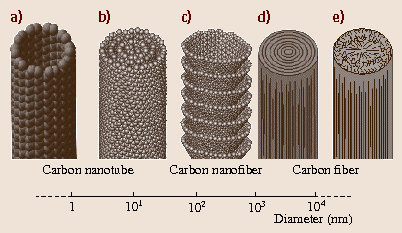 One of the dreams of a green economy where the amount of CO2 in the atmosphere is stable, and not slowly increasing, is the ability to draw CO2 from the atmosphere and convert it to a solid form. Often referred to as carbon capture, some form of this is going to be necessary eventually, and most climate projections include the notion of carbon capture coming online by 2050. Right now we don’t have a way to economically and on a massive industrial scale pull significant CO2 from the air. There is some carbon capture in the US, for example, but it accounts for only 0.4% of CO2 emissions. It is used near locations of high CO2 production, like coal-fired plants.
One of the dreams of a green economy where the amount of CO2 in the atmosphere is stable, and not slowly increasing, is the ability to draw CO2 from the atmosphere and convert it to a solid form. Often referred to as carbon capture, some form of this is going to be necessary eventually, and most climate projections include the notion of carbon capture coming online by 2050. Right now we don’t have a way to economically and on a massive industrial scale pull significant CO2 from the air. There is some carbon capture in the US, for example, but it accounts for only 0.4% of CO2 emissions. It is used near locations of high CO2 production, like coal-fired plants.
But there is a lot of research being done, mostly in the proof of concept stage. Scientists at the DOE and Brookhaven National Laboratory have published a process which seems to have promise. They can convert CO2 in the atmosphere to carbon nanofibers, which is a solid form of carbon with potential industrial uses. One potential use of these nanofibers would be as filler for concrete. This would bind up the carbon for at least 50 years, while making the concrete stronger.
In order to get from CO2 to carbon nanofibers they break the process up into two steps. They figured out a way, using an iron-cobalt catalyst, to make carbon monoxide (CO) into carbon nanofibers. This is a thermocatalyst process operating at 400 degrees C. That’s hot, but practical for industrial processes. It’s also much lower than the 1000 degrees C required for a method that would go directly from CO2 to carbon nanofibers.
Continue Reading »
Jan
16
2024
 In 1964 Isaac Asimov, asked to imagine the world 50 years in the future, wrote:
In 1964 Isaac Asimov, asked to imagine the world 50 years in the future, wrote:
“The appliances of 2014 will have no electric cords, of course, for they will be powered by long- lived batteries running on radioisotopes. The isotopes will not be expensive for they will be by- products of the fission-power plants which, by 2014, will be supplying well over half the power needs of humanity.”
Today nuclear fission provides about 10% of the world’s electricity. Asimov can be forgiven for being off by such a large amount. He, as a science fiction futurist, was thinking more about the technology itself. Technology is easier to predict than things like public acceptance, irrational fear of anything nuclear, or even economics (which even economists have a hard time predicting).
But he was completely off about the notion that nuclear batteries would be running most everyday appliances and electronics. This now seems like a quaint retro-futuristic vision, something out of the Fallout franchise. Here the obstacle to widespread adoption of nuclear batteries has been primarily technological (issues of economics and public acceptance have not even come into play yet). Might Asimov’s vision still come true, just decades later than he thought? It’s theoretically possible, but there is still a major limitation that for now appears to be a deal-killer – the power output is still extremely low.
Continue Reading »
Jan
12
2024
 University of Central Lancashire (UCLan) PhD student Alexia Lopez, who two years ago discovered a giant arc of galaxy clusters in the distant universe, has now discovered a Big Ring. This (if real) is one of the largest structures in the observable universe at 1.3 billion light years in diameter. The problem is – such a large structure should not be possible based on current cosmological theory. It violates what is known as the Cosmological Principle (CP), the notion that at the largest scales the universe is uniform with evenly distributed matter.
University of Central Lancashire (UCLan) PhD student Alexia Lopez, who two years ago discovered a giant arc of galaxy clusters in the distant universe, has now discovered a Big Ring. This (if real) is one of the largest structures in the observable universe at 1.3 billion light years in diameter. The problem is – such a large structure should not be possible based on current cosmological theory. It violates what is known as the Cosmological Principle (CP), the notion that at the largest scales the universe is uniform with evenly distributed matter.
The CP actually has two components. One is called isotropy, which means that if you look in any direction in the universe, the distribution of matter should be the same. The other component is homogeneity, which means that wherever you are in the universe, the distribution of matter should be smooth. Of course, this is only true beyond a certain scale. At small scale, like within a galaxy or even galaxy cluster, matter is not evenly distributed, and it does matter which direction you look. But at some point in scale, isotropy and heterogeneity are the rule. Another way to look at this is – there is an upper limit to the size of any structure in the universe. The Giant Arc and Big Ring are both too big. If the CP is correct, they should not exist. There are also a handful of other giant structures in the universe, so these are not the first to violate the CP.
The Big Ring is just that, a two-dimensional structure in the shape of a near-perfect ring facing Earth (likely not a coincidence but rather the reason it was discoverable from Earth). Alexia Lopez later discovered that the ring is actually a corkscrew shape. The Giant Arc is just that, the arc of a circle. Interestingly, it is in the same region of space and the same distance as the Big Ring, so the two structures exist at the same time and place. This suggests they may be part of an even bigger structure.
How certain are we that these structures are real, and not just a coincidence? Professor Don Pollacco, of the department of physics at the University of Warwick, said the probability of this being a statistical fluke is “vanishingly small”. But still, it seems premature to hang our hat on these observations just yet. I would like to see some replications and attempts at poking holes in Lopez’s conclusions. That is the normal process of science, and it takes time to play out. But so far, it seems like solid work.
Continue Reading »
Jan
08
2024
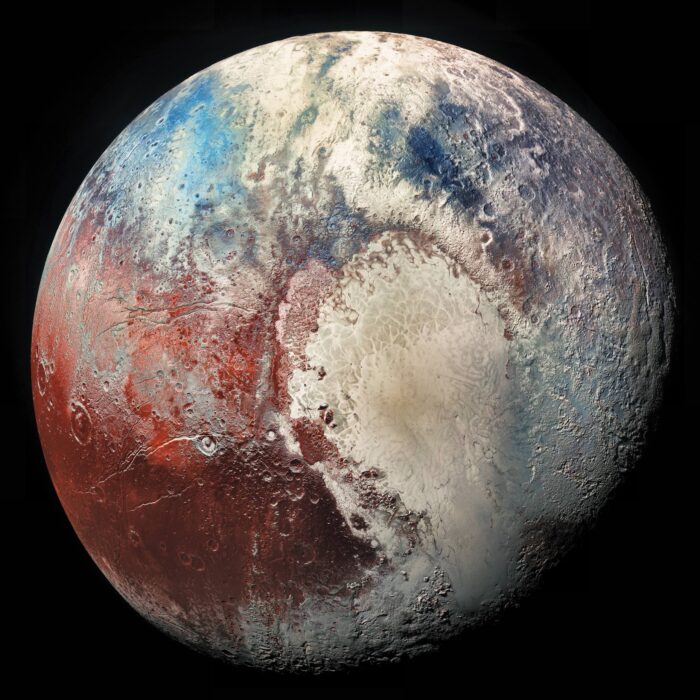 Categorization is critical in science, but it is also very tricky, often deceptively so. We need to categorize things to help us organize our knowledge, to understand how things work and relate to each other, and to communicate efficiently and precisely. But categorization can also be a hindrance – if we get it wrong, it can bias or constrain our thinking. The problem is that nature rarely cleaves in straight clean lines. Nature is messy and complicated, almost as if it is trying to defy our arrogant attempts at labeling it. Let’s talk a bit about how we categorize things, how it can go wrong, and why it matters.
Categorization is critical in science, but it is also very tricky, often deceptively so. We need to categorize things to help us organize our knowledge, to understand how things work and relate to each other, and to communicate efficiently and precisely. But categorization can also be a hindrance – if we get it wrong, it can bias or constrain our thinking. The problem is that nature rarely cleaves in straight clean lines. Nature is messy and complicated, almost as if it is trying to defy our arrogant attempts at labeling it. Let’s talk a bit about how we categorize things, how it can go wrong, and why it matters.
We can start with an example that might seem like a simple category – what is a planet? Of course, any science nerd knows how contentious the definition of a planet can be, which is why it is a good example. Astronomers first defined them as wandering stars – the points of light that were not fixed but seemed to wonder throughout the sky. There was something different about them. This is often how categories begin – we observe a phenomenon we cannot explain and so the phenomenon is the category. This is very common in medicine. We observe a set of signs and symptoms that seem to cluster together, and we give it a label. But once we had a more evolved idea about the structure of the universe, and we knew that there are stars and stars have lots of stuff orbiting around them, we needed a clean way to divide all that stuff into different categories. One of those categories is “planet”. But how do we define planet in an objective, intuitive, and scientifically useful way?
This is where the concept of “defining characteristic” comes in. A defining characteristic is, “A property held by all members of a class of object that is so distinctive that it is sufficient to determine membership in that class. A property that defines that which possesses it.” But not all categories have a clear defining characteristic, and for many categories a single characteristic will never suffice. Scientists can and do argue about which characteristics to include as defining, which are more important, and how to police the boundaries of that characteristic.
Continue Reading »
Jan
04
2024
 This is one of the biggest thought experiments in science today – as we look for life elsewhere in the universe, what should we be looking for, exactly? Other stellar systems are too far away to examine directly, and even our most powerful telescopes can only resolve points of light. So how do we tell if there is life on a distant exoplanet? Also, how could we detect a distant technological civilization?
This is one of the biggest thought experiments in science today – as we look for life elsewhere in the universe, what should we be looking for, exactly? Other stellar systems are too far away to examine directly, and even our most powerful telescopes can only resolve points of light. So how do we tell if there is life on a distant exoplanet? Also, how could we detect a distant technological civilization?
Here is where the thought experiment comes in. We know what life on Earth is like, and we know what human technology is like, so obviously we can search for other examples of what we already know. But the question is – how might life different from life on Earth be detected? What are the possible signatures of a planet covered in living things that perhaps look nothing like life on Earth. Similarly, what alien technologies might theoretically exist, and how could we detect them?
A recent paper explores this question from one particular angle – are there conditions on a planet that are necessary for the development of technology? They hypothesize that there is an “oxygen bottleneck”, a minimum concentration of oxygen in the atmosphere of a planet, that is necessary for the development of advanced technology. Specifically they argue that open air combustion, which requires a partial pressure (PO2) of oxygen of ≥ 18% (it’s about 21% on Earth), is necessary for fire and metallurgy, and that these are necessary stepping stones on the path to advanced technology.
Continue Reading »
Jan
02
2024
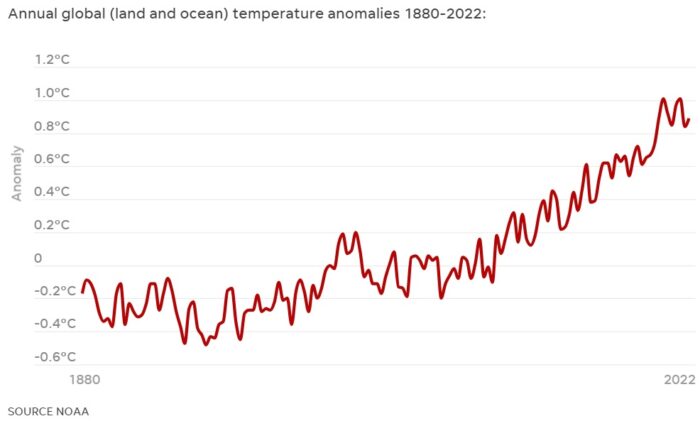 What everyone knew was coming is now official – 2023 was the warmest year on record. This means we can also say that the last 10 years are the hottest decade on record. 2023 dethrones 2016 as the previous warmest year and bumps 2010 out of the top 10. Further, in the last half of the year, many of the months were the hottest months on record, and by a large margin. September’s average temperature was 1.44 C above pre-industrial levels, beating the previous record set in 2020 of 0.98 C. The average for 2023 is 1.4 C, beating the previous record in 2016 of 1.2 C. This also makes 2023 probably the warmest year in the last 125,000 years.
What everyone knew was coming is now official – 2023 was the warmest year on record. This means we can also say that the last 10 years are the hottest decade on record. 2023 dethrones 2016 as the previous warmest year and bumps 2010 out of the top 10. Further, in the last half of the year, many of the months were the hottest months on record, and by a large margin. September’s average temperature was 1.44 C above pre-industrial levels, beating the previous record set in 2020 of 0.98 C. The average for 2023 is 1.4 C, beating the previous record in 2016 of 1.2 C. This also makes 2023 probably the warmest year in the last 125,000 years.
There is no mystery as to why this is happening, and it’s exactly what scientists predicted would happen. Remember the global warming “pause” that was allegedly happening between 1998 and 2012? This was the pause that never was, a short term fluctuation in the long term trend and a bit of statistical voodoo. Global warming deniers were declaring that global warming was over, it was never real, it was just a statistical fluke and the world was regressing back to the mean. Meanwhile, scientists said the long term trend had not altered and predicted the next decade would be even warmer. In retrospect, it turns out that during the alleged “pause” more heat was going into the oceans and was not fully reflected in surface temperatures.
The best test of a scientific hypothesis is its ability to make predictions about future data. The deniers were predicting that the Earth would simply return to baseline temperatures, while the scientific community were united in predicting that the next decade (now the past decade) would see continued warming.
Continue Reading »
 Arguably the type of advance that has the greatest impact on technology is material science. Technology can advance by doing more with the materials we have, but new materials can change the game entirely. It is no coincidence that we mark different technological ages by the dominant material used, such as the bronze age and iron age. But how do we invent new materials?
Arguably the type of advance that has the greatest impact on technology is material science. Technology can advance by doing more with the materials we have, but new materials can change the game entirely. It is no coincidence that we mark different technological ages by the dominant material used, such as the bronze age and iron age. But how do we invent new materials?
 As I have written many times, including in yesterday’s post, people occupying space is hard. The environment of space, or really anywhere not on Earth, is harsh and unforgiving. One of the issues, for example, rarely addressed in science fiction or even discussions of space travel, is radiation. We don’t really have a solution to deal with radiation exposure outside the protective atmosphere and magnetic field of Earth.
As I have written many times, including in yesterday’s post, people occupying space is hard. The environment of space, or really anywhere not on Earth, is harsh and unforgiving. One of the issues, for example, rarely addressed in science fiction or even discussions of space travel, is radiation. We don’t really have a solution to deal with radiation exposure outside the protective atmosphere and magnetic field of Earth. In the excellent sci fi show, The Expanse, which takes place a couple hundred years in the future, Mars has been settled and is an independent self-sustaining society. In fact, Mars is presented as the most scientifically and technologically advanced society of humans in the solar system. This is presented as being due to the fact that Martians have had to struggle to survive and build their world, and that lead to a culture of innovation and dynamism.
In the excellent sci fi show, The Expanse, which takes place a couple hundred years in the future, Mars has been settled and is an independent self-sustaining society. In fact, Mars is presented as the most scientifically and technologically advanced society of humans in the solar system. This is presented as being due to the fact that Martians have had to struggle to survive and build their world, and that lead to a culture of innovation and dynamism. Have you heard of Cope’s Rule or Foster’s Rule?
Have you heard of Cope’s Rule or Foster’s Rule?  One of the dreams of a green economy where the amount of CO2 in the atmosphere is stable, and not slowly increasing, is the ability to draw CO2 from the atmosphere and convert it to a solid form. Often referred to as carbon capture, some form of this is going to be necessary eventually, and most climate projections include the notion of carbon capture coming online by 2050. Right now we don’t have a way to economically and on a massive industrial scale pull significant CO2 from the air. There is some carbon capture in the US, for example, but it accounts for
One of the dreams of a green economy where the amount of CO2 in the atmosphere is stable, and not slowly increasing, is the ability to draw CO2 from the atmosphere and convert it to a solid form. Often referred to as carbon capture, some form of this is going to be necessary eventually, and most climate projections include the notion of carbon capture coming online by 2050. Right now we don’t have a way to economically and on a massive industrial scale pull significant CO2 from the air. There is some carbon capture in the US, for example, but it accounts for  In 1964 Isaac Asimov, asked to
In 1964 Isaac Asimov, asked to  University of Central Lancashire (UCLan) PhD student Alexia Lopez, who two years ago discovered a giant arc of galaxy clusters in the distant universe,
University of Central Lancashire (UCLan) PhD student Alexia Lopez, who two years ago discovered a giant arc of galaxy clusters in the distant universe, Categorization is critical in science, but it is also very tricky, often deceptively so. We need to categorize things to help us organize our knowledge, to understand how things work and relate to each other, and to communicate efficiently and precisely. But categorization can also be a hindrance – if we get it wrong, it can bias or constrain our thinking. The problem is that nature rarely cleaves in straight clean lines. Nature is messy and complicated, almost as if it is trying to defy our arrogant attempts at labeling it. Let’s talk a bit about how we categorize things, how it can go wrong, and why it matters.
Categorization is critical in science, but it is also very tricky, often deceptively so. We need to categorize things to help us organize our knowledge, to understand how things work and relate to each other, and to communicate efficiently and precisely. But categorization can also be a hindrance – if we get it wrong, it can bias or constrain our thinking. The problem is that nature rarely cleaves in straight clean lines. Nature is messy and complicated, almost as if it is trying to defy our arrogant attempts at labeling it. Let’s talk a bit about how we categorize things, how it can go wrong, and why it matters. This is one of the biggest thought experiments in science today – as we look for life elsewhere in the universe, what should we be looking for, exactly? Other stellar systems are too far away to examine directly, and even our most powerful telescopes can only resolve points of light. So how do we tell if there is life on a distant exoplanet? Also, how could we detect a distant technological civilization?
This is one of the biggest thought experiments in science today – as we look for life elsewhere in the universe, what should we be looking for, exactly? Other stellar systems are too far away to examine directly, and even our most powerful telescopes can only resolve points of light. So how do we tell if there is life on a distant exoplanet? Also, how could we detect a distant technological civilization? What everyone knew was coming is now official – 2023 was the warmest year on record. This means we can also say that the last 10 years are the
What everyone knew was coming is now official – 2023 was the warmest year on record. This means we can also say that the last 10 years are the 




